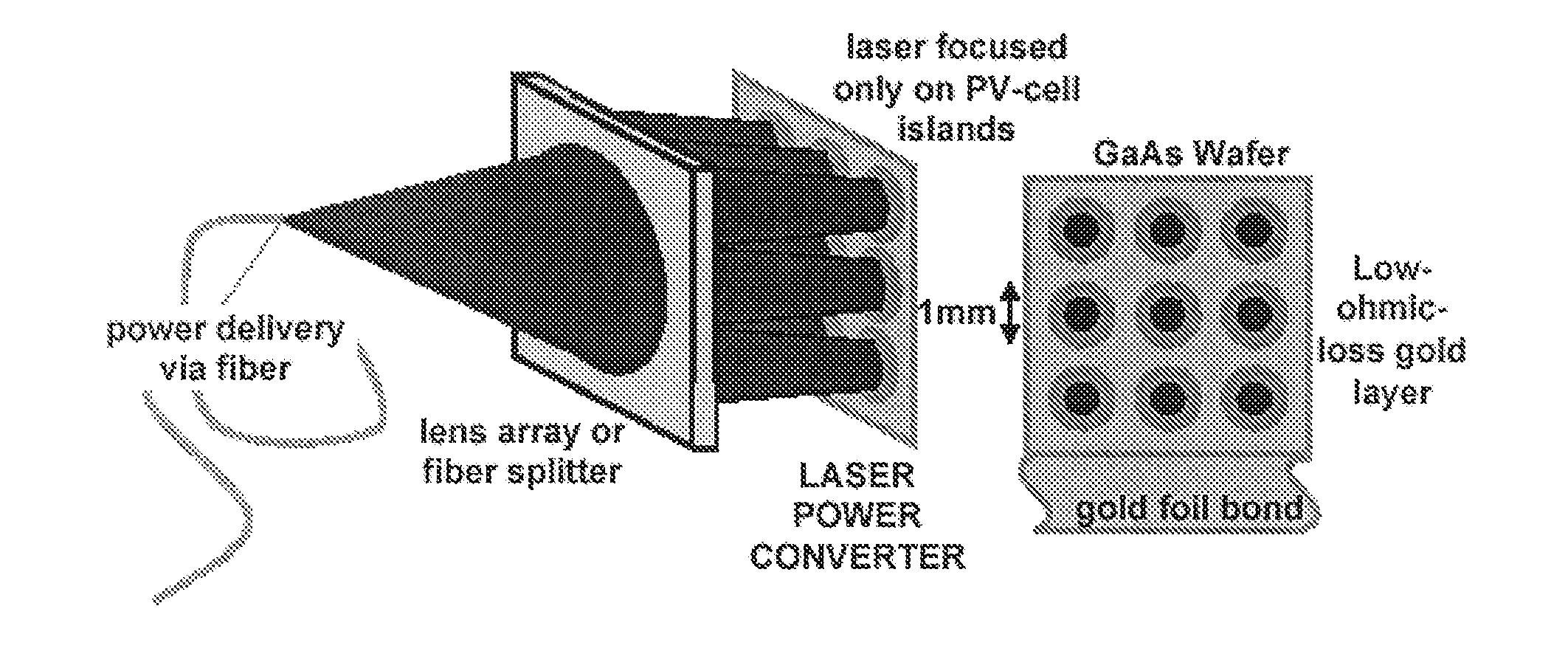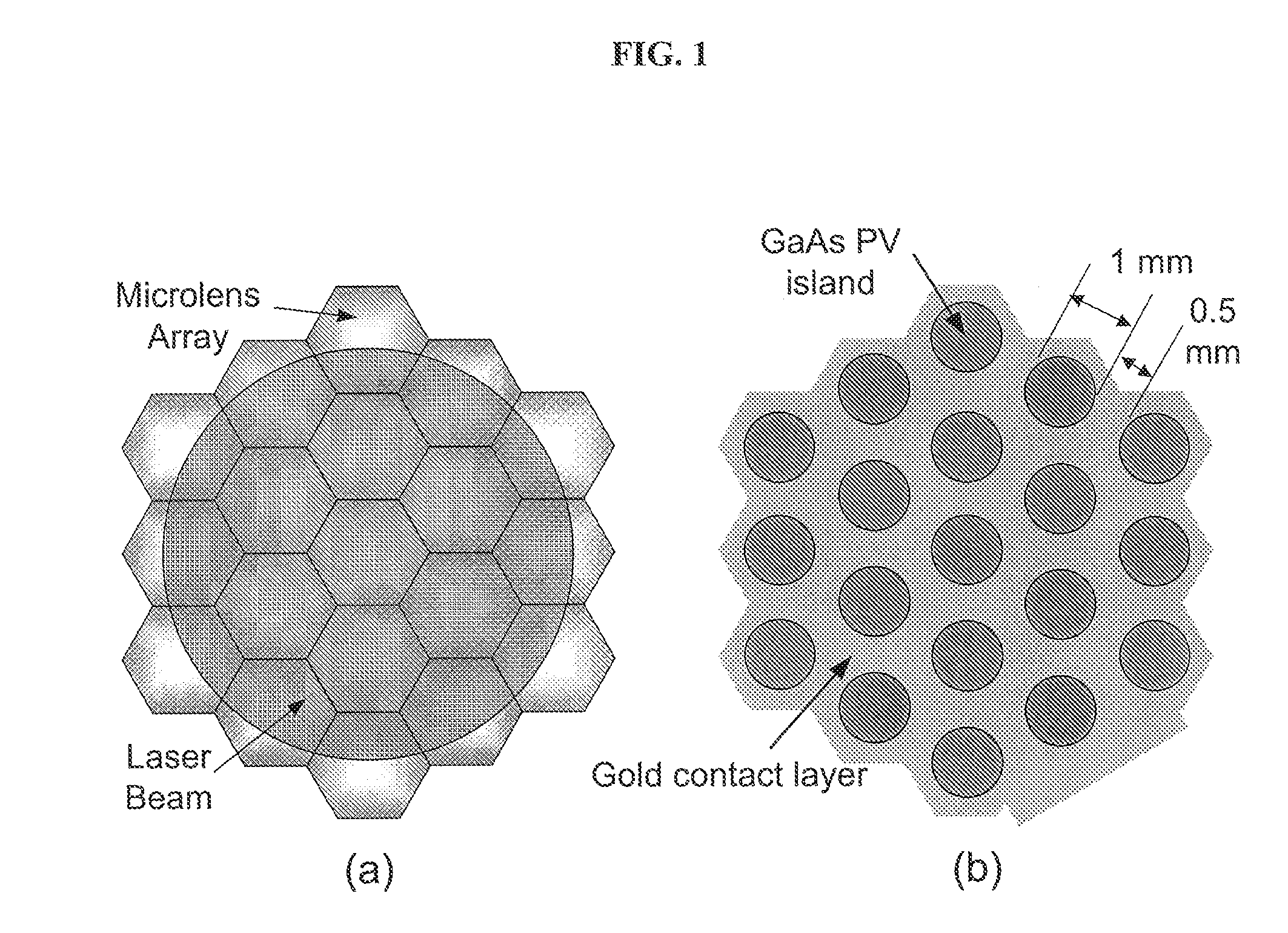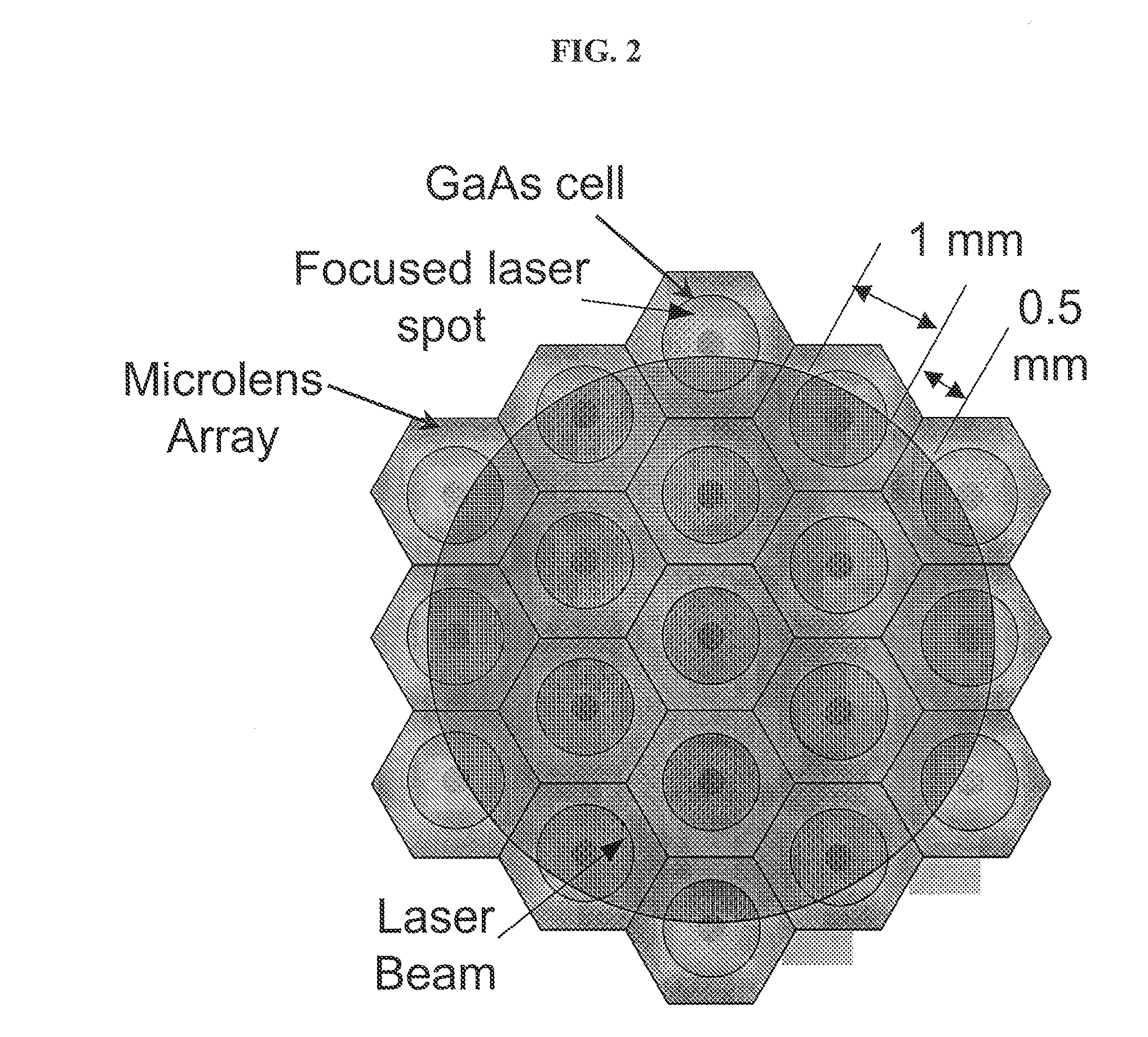Pixelated photovoltaic array method and apparatus
- Summary
- Abstract
- Description
- Claims
- Application Information
AI Technical Summary
Benefits of technology
Problems solved by technology
Method used
Image
Examples
Embodiment Construction
[0030]The apparatus and methods of the present invention will now be described in detail by reference to various non-limiting embodiments of the invention.
[0031]Unless otherwise indicated, all numbers expressing dimensions, compositions, efficiencies, and so forth used in the specification and claims are to be understood as being modified in all instances by the term “about.” Without limiting the application of the doctrine of equivalents to the scope of the claims, each numerical parameter should at least be construed in light of the number of reported significant digits and by applying ordinary rounding techniques.
[0032]In one aspect of the present invention, a method and apparatus are provided to increase the efficiency of photovoltaic (PV) power conversion of lasers, delivered via optical fiber, into electrical power. A “laser” (from the acronym of Light Amplification by Stimulated Emission of Radiation) is an optical source that emits photons in a coherent beam. Throughout this...
PUM
 Login to View More
Login to View More Abstract
Description
Claims
Application Information
 Login to View More
Login to View More - R&D
- Intellectual Property
- Life Sciences
- Materials
- Tech Scout
- Unparalleled Data Quality
- Higher Quality Content
- 60% Fewer Hallucinations
Browse by: Latest US Patents, China's latest patents, Technical Efficacy Thesaurus, Application Domain, Technology Topic, Popular Technical Reports.
© 2025 PatSnap. All rights reserved.Legal|Privacy policy|Modern Slavery Act Transparency Statement|Sitemap|About US| Contact US: help@patsnap.com



